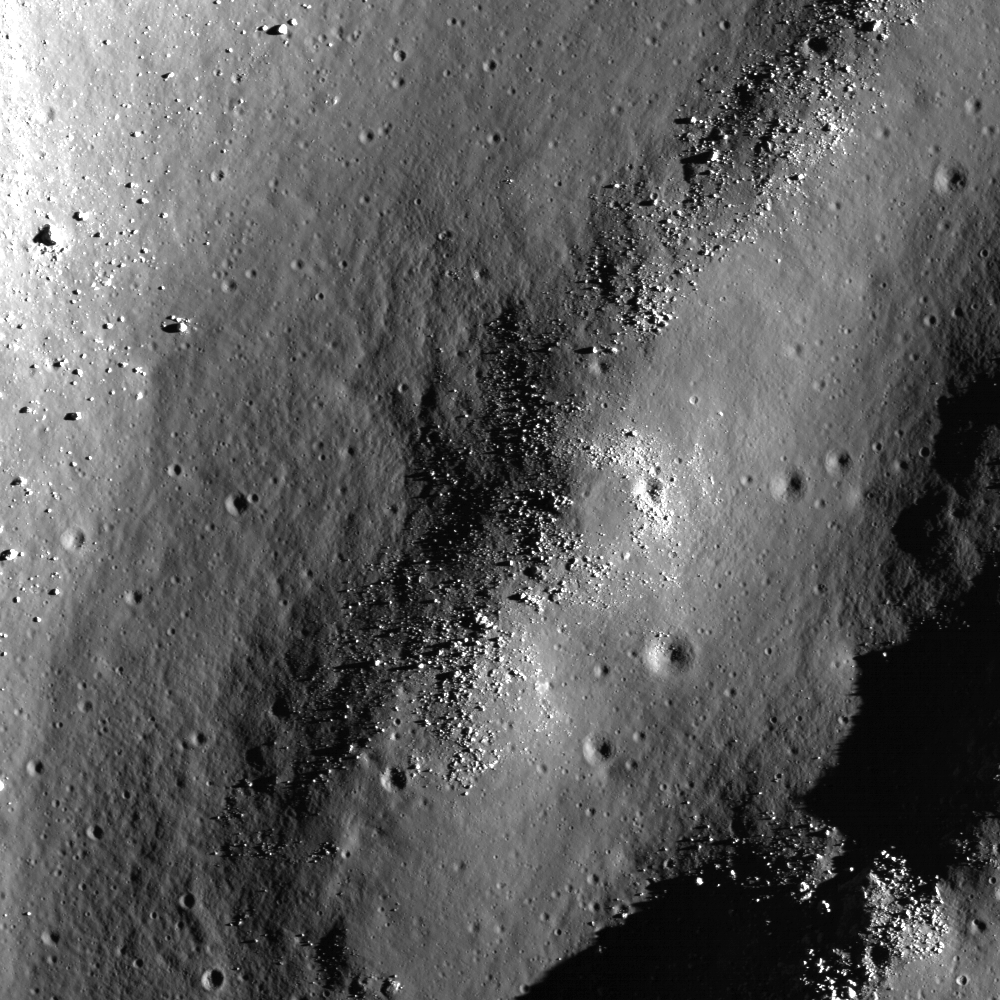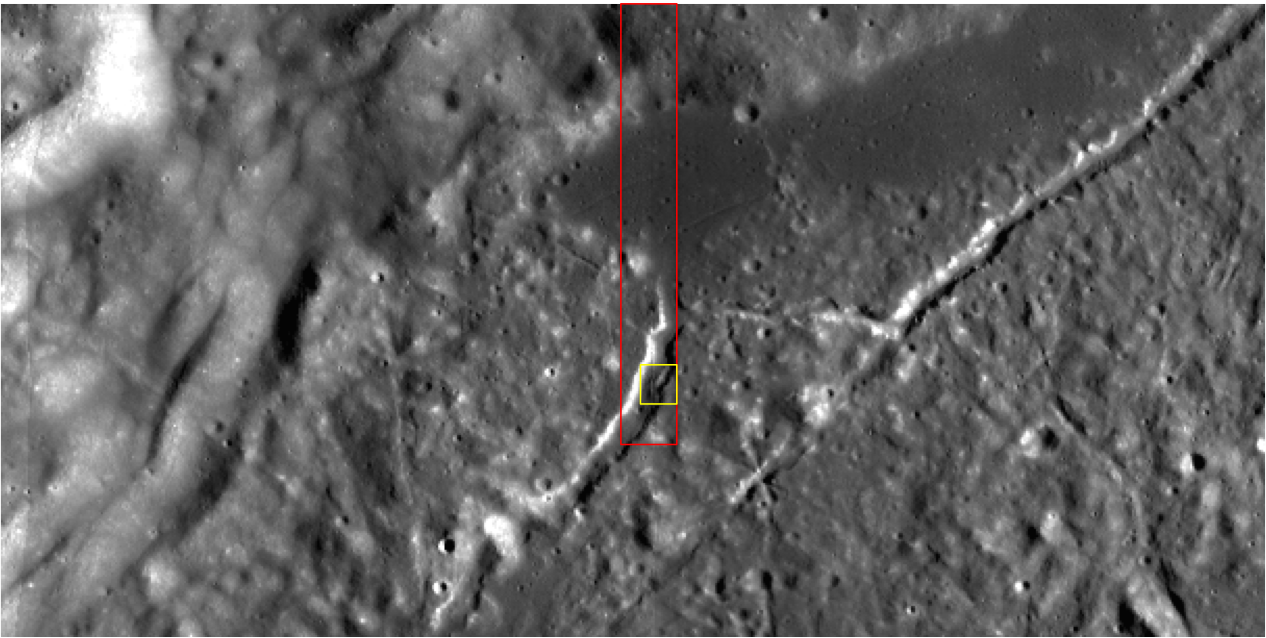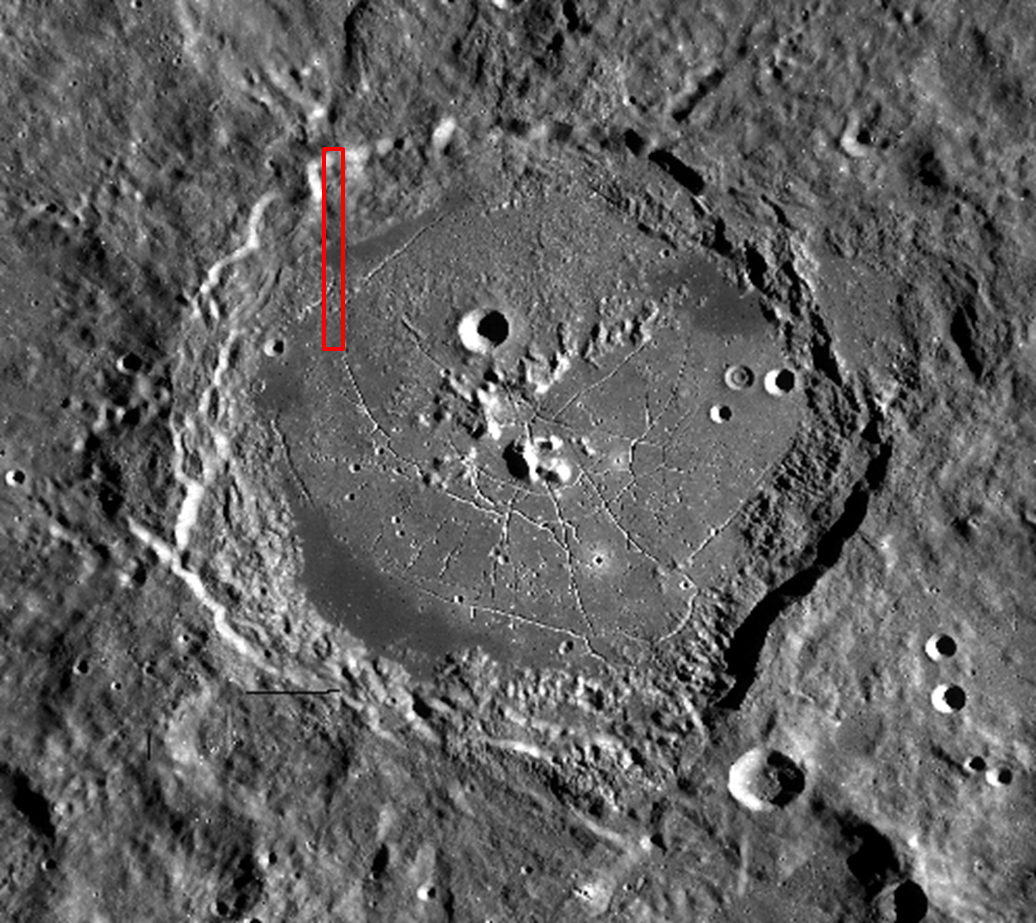
Many lunar craters contain floor fractures and evidence for volcanic activity. In the case of Today's Featured Image, the fracture seen eroding to boulders formed in the large impact crater Humboldt, whose floor has been partially covered by dark mantle material (possibly pyroclastic in origin) and lava flows. There are a few possibilities for the formation of these floor fractures. The two most common are viscous relaxation and intrusive magmatic activity, though intrusive magmatic activity is currently the favored model.
The lava flows, some of which can be seen in the WAC context images above, are limited to only a few small areas within Humboldt and only partially fill some fractures, so they were probably not extruded during the formation of the fractures. If they had been emplaced during the formation of the fractures, then we would expect to see lava flows everywhere there are fractures, which is not the case. However, the intrusion of the magma into the subsurface of the crater floor (that eventually erupted onto the surface) could have contributed to the formation of the fractures by causing the floor to dome up.
Check out the full NAC below!
Related Posts:
Last Portion of the Original Floor
Published by H. Meyer on 23 December 2013

